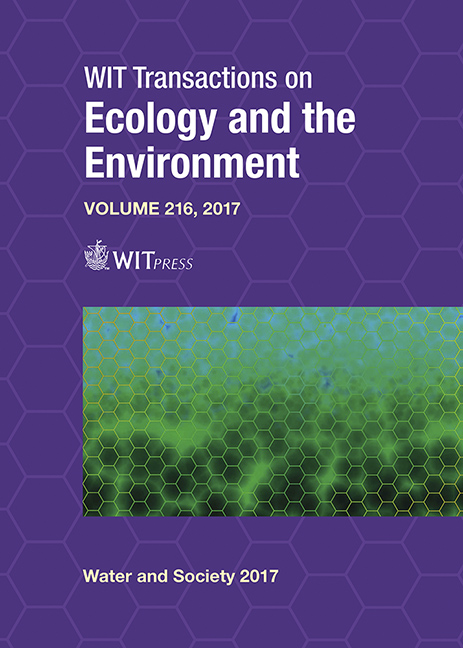UNDERSTANDING BIOFILM ISSUES IN WASTEWATER PIPES: THE CASE OF NORWEGIAN AND SWEDISH MUNICIPALITIES
Price
Free (open access)
Transaction
Volume
216
Pages
10
Page Range
113 - 122
Published
2017
Paper DOI
10.2495/WS170101
Copyright
WIT Press
Author(s)
HELGE FOSSBERG, ULF RYDNINGEN, CHRISTOPH MERSCHBROCK
Abstract
It is well known how wastewater creates biofilm in pipes. Wastewater contains many microorganisms and other materials that make the pipes particularly susceptible to biofilm formation. Biofilm is an aggregate of microorganisms, where the cells are embedded within a self-producing matrix of extracellular polymeric substance containing sugars, proteins and DNA. It can cause a reduction of the inner diameter of the pipes, which again affects the flow and self-cleaning. Turbulence can occur and cause more biofilm formation. Like other substances and objects, biofilm also contributes to reducing the pipe diameter. This is especially true in cases of water turbulence causing more biofilm. This study sets out to understand the extent to which biofilm is a problem in municipal wastewater pipes. Data was collected in Norwegian and Swedish municipalities, by using questionnaires. The results of our study confirm that biofilm formation is a problem in wastewater pipes in Norway and Sweden, especially in the long pipes. The age of the pipes, roughness, and type of material play a significant role in the formation of biofilm. Other factors can also impact the formation, such as food habits and the amount of fat in the wastewater. Another finding in our study is that biofilm formation most likely starts in the sumps of the pumphouses, but municipalities pay little attention to the maintenance of these installations. There are different cleaning techniques in use to maintain the wastewater pipelines, but the costs of maintenance are great. Biofilm formation cannot be eliminated, but the goal must be to reduce the formation, with as little resources as possible.
Keywords
biofilm, wastewater, causes of biofilm, cleaning techniques, municipalities





